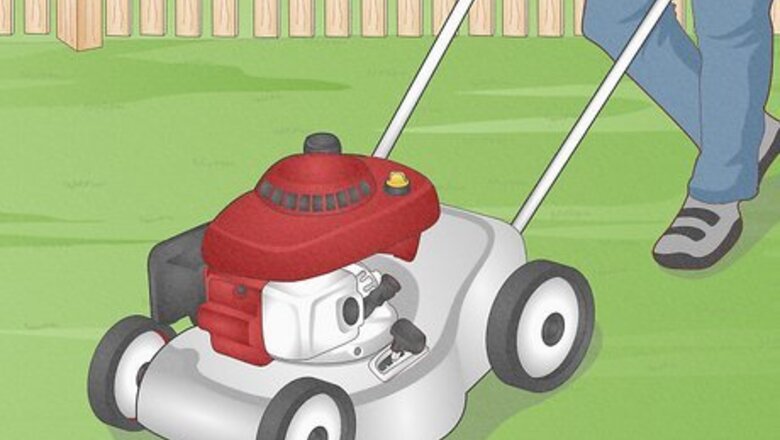
views
Starting the Lawnmower
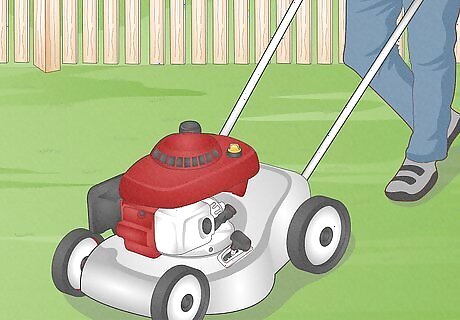
Prepare to start the lawnmower. Move the lawnmower to an open, grassy area. Clear away any children's toys or rocks.
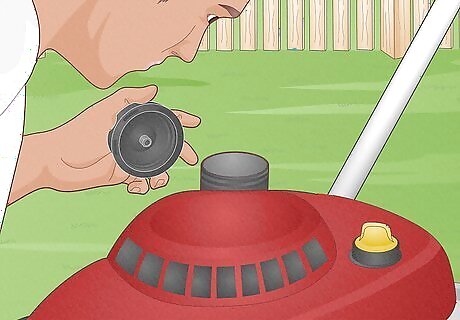
Make sure your mower has gas and oil. If your mower has a 4-stroke engine, you can check the oil by opening the oil fill cap or dipstick. If your mower has a 2-stroke engine you'll need to mix oil in the gas. Make sure you mix the the right kind of oil with the gas, and in the proper ratio for your engine.
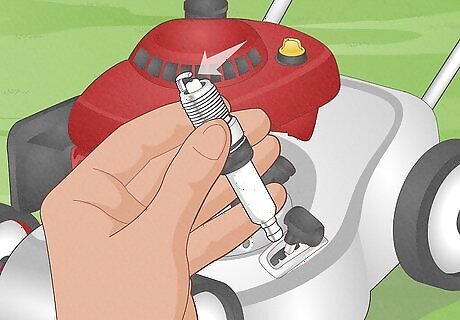
Check the spark plug. There should be a single spark plug end sticking out on the back or side of the motor, with a lead that looks a thick wire with a rubber cap attached to it. This is what gets that motor running so make sure that the lead is firmly attached to the spark plug. If it’s properly attached, it will look like a thick rubber hose capped onto a metal protrusion. If the spark plug isn’t firmly attached, refer to your user manual. You may need to take the lawnmower to a mechanic to have it fixed. Have a mechanic change the spark plug once a year.
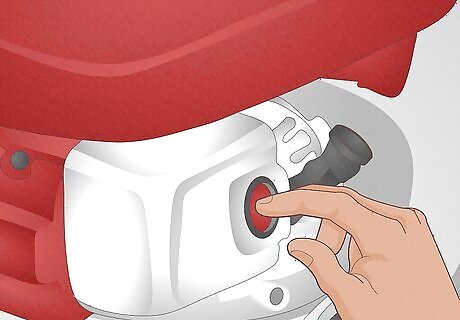
Prime the carburetor. Locate the prime button, which is usually a red or black squishy button somewhere on the mower's body. Push it between 3 and 4 times in order to force the gasoline into the lines. Don't go crazy with the squishing, or you'll flood the engine. If you can’t find the prime button, refer to your user manual. If your mower doesn’t have a prime button, skip this step. However, double check the user manual to be sure.
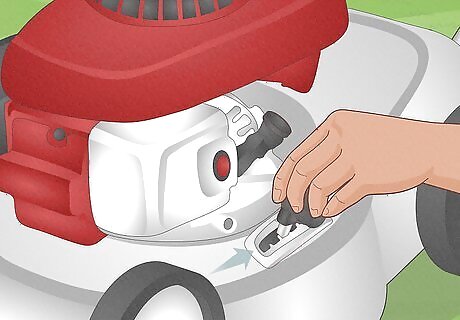
Open the throttle. The will usually be a lever on the handle of the lawnmower or on the body of the engine. Put the throttle lever in a mid-to-high position. If you skip this step, the engine won’t be able to keep going once you’ve started it. If the mower is cold, set the choke. The choke helps provide a richer fuel-air mixture to the engine, which helps it stay running until it warms up. Once the mower has been running for a few minutes turn off the choke.
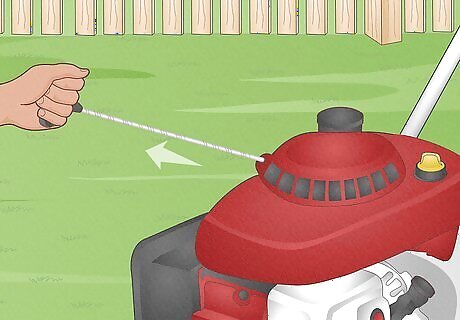
Pull the starter cord. If your lawnmower has a horizontal lever near the handle, hold it against the handle. Next, grip the handle of the starter (attached at the end of a rope or cord), and pull upward quickly and firmly. You may have to do this several times before the motor starts up. If it doesn’t start or make any noises at all, the spark plug may not be attached. Check the spark plug and try again. If it sputters and sounds like it’s trying to start (but doesn’t) you may not have enough gas in the tank.
Diagnosing Problems
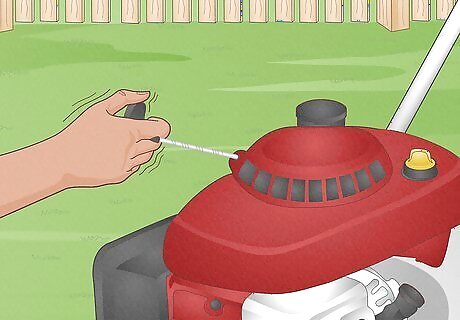
Check if the starter is stuck. The starter is the rope with a handle coming out of the body of the lawnmower. If this chain is abnormally difficult to pull, the blade may be stuck or jammed with grass. Disconnect the spark plug by gently pulling the head of the rubber hose away from the metal attachment. Turn the lawnmower on its side and clear the debris from the lawnmower, being careful of the sharp blades. You MUST disconnect the spark plug before doing this. Otherwise, you risk the lawnmower starting with your hands inside of it. If the starter is still stuck after clearing out the debris, see a mechanic.
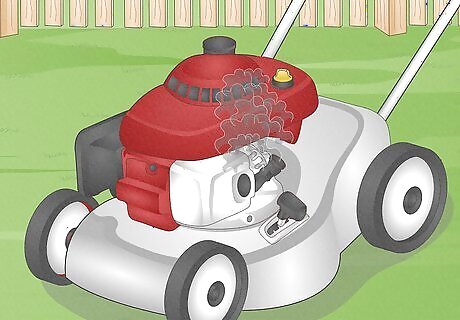
Examine your lawnmower if it is smoking. First, turn off your lawnmower and allow it to sit for an hour to cool off. Monitor it to make sure the smoking stops after a few minutes. Keep a fire extinguisher on hand in case of emergencies. If your lawnmower is smoking and won’t stay on, take it to a small engine a mechanic. Your mower may need servicing.
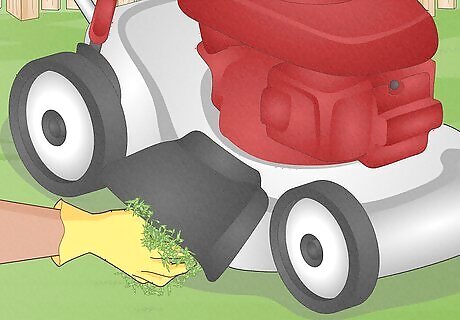
Clear the discharge chute. Once the motor has cooled, disconnect the spark plug and clear away debris from the blades and the discharge chute (where the grass clippings fly out). If the lawnmower continues to smoke, the air filter may be clogged or the blades may be bent. See a mechanic to resolve these issues. The air filter should be replaced yearly to reduce the risk of clogging.
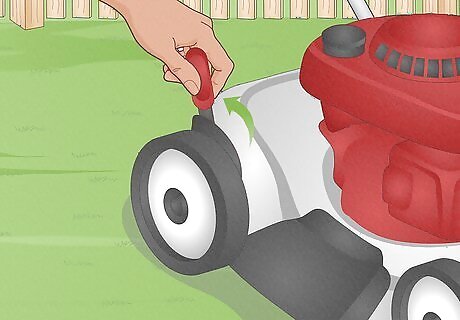
Change the mower height if you lose power while mowing. If your mower dies while you’re using it, you may be cutting grass that is too tall. If this is the case, raise the cutting height of your lawnmower. Refer to your user manual to do this as every lawnmower is different. Check your user manual to see if it addresses this issue. Some models have “quirks” that can be easily fixed if you know how to do it. Always be careful when changing the height of your lawnmower. Make sure the mower is off and the spark plug is disconnected.
Taking Care of Your Lawnmower
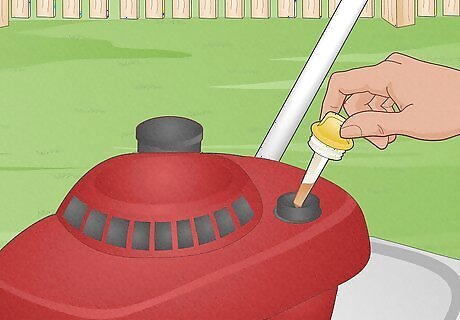
Check the motor oil before every use. This step is especially important if your lawnmower hasn’t been used for a long period of time. Look for a cap on top of the mower body displaying the word "oil" or a picture of an oilcan. Unscrew this cap to begin checking the oil. If your lawn mower doesn’t have a dipstick attached to the oil lid, look for a “fill” line inside the oil tank. If the oil level is below that line, add more oil.
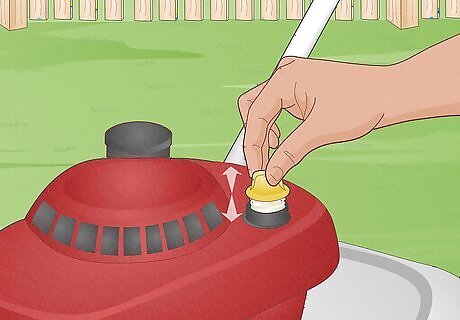
Insert the dipstick into the oil. There will be a dipstick attached to the lid to help you measure the oil. Wipe the dipstick clean and reinsert the dipstick completely. Remove the dipstick again and check the oil level on the stick. If it’s below the “fill” line, add more motor oil. Refer to your user manual if you don’t know what kind of oil your mower uses.
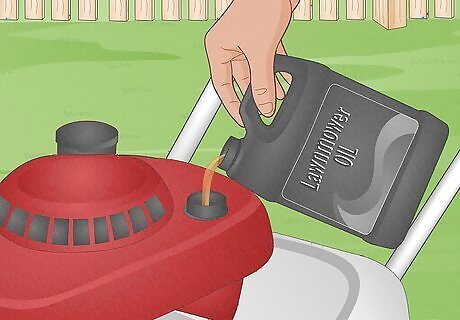
Maintain the condition of your lawnmower. Change the oil at the recommended service interval (around 25 hours of normal operation is a good rule of thumb if you're not sure). Changing the oil yourself can be difficult and messy. If you’re inexperienced and have the funds, save yourself the headache and take the lawnmower to a professional lawnmower mechanic. Similarly, your lawn mower blades need to be sharpened every few months. This process is very dangerous and should be done by a lawnmower mechanic. If you decide to change the oil yourself, remember to properly dispose of the leftover oil by taking it to a recycling facility. Used oil can contaminate groundwater and damage the environment. Never attempt to work on machinery alone. If you get hurt, no one will be around to help you.
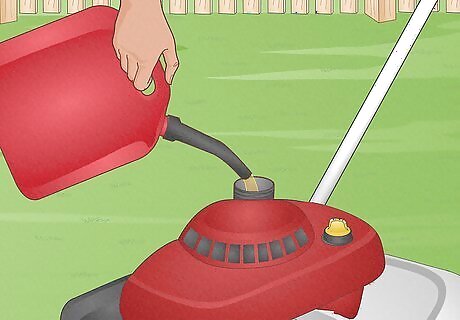
Fill the gas tank. This is the most common cause of lawnmower “failure.” Open the gas cap and take a look inside. If you don't see any gas in there, fill it up to the recommended level. There should be markings on the inside to show you where that is; if you don’t see one, fill until the level of gasoline is just below the filler tube. Avoid filling the gas tank too high. If you do, the gas may spill out and cause a fire. If you’re not sure what kind of gas to use, refer to your user manual. To care for your lawn during a hot summer, mow high and water deeply and infrequently. Choose a fertilizer for your lawn depending on whether you want to achieve growth, replenish missing nutrients, or develop stronger roots. Once you figure out what works for your lawn, stick to that plan and see it through.

















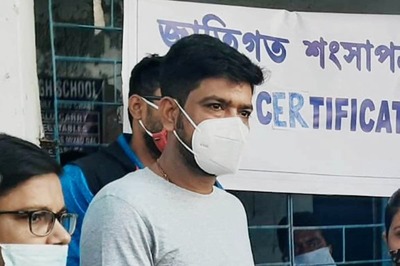


Comments
0 comment